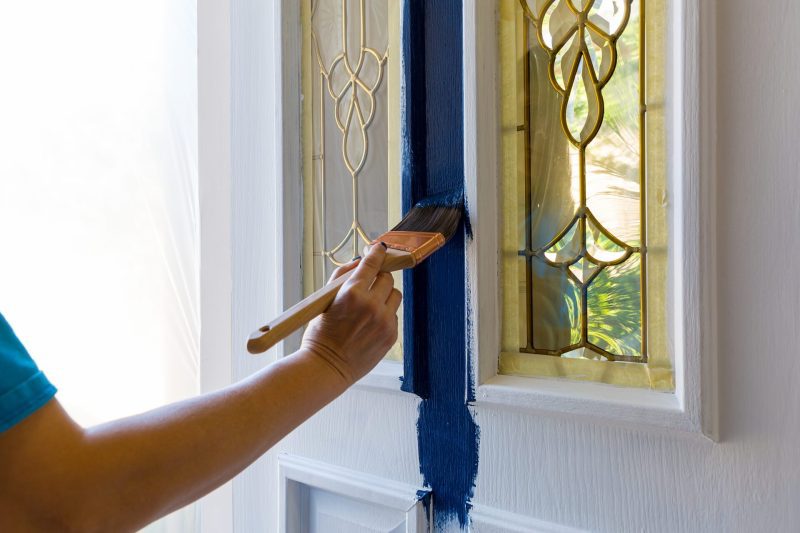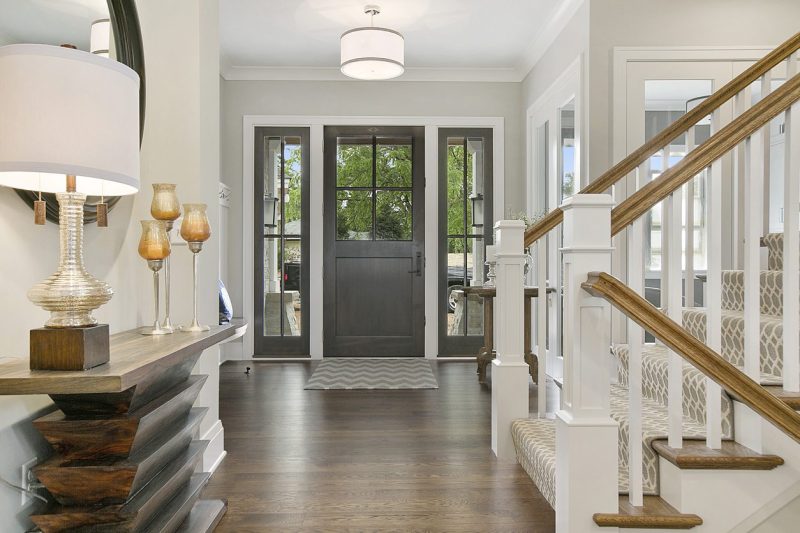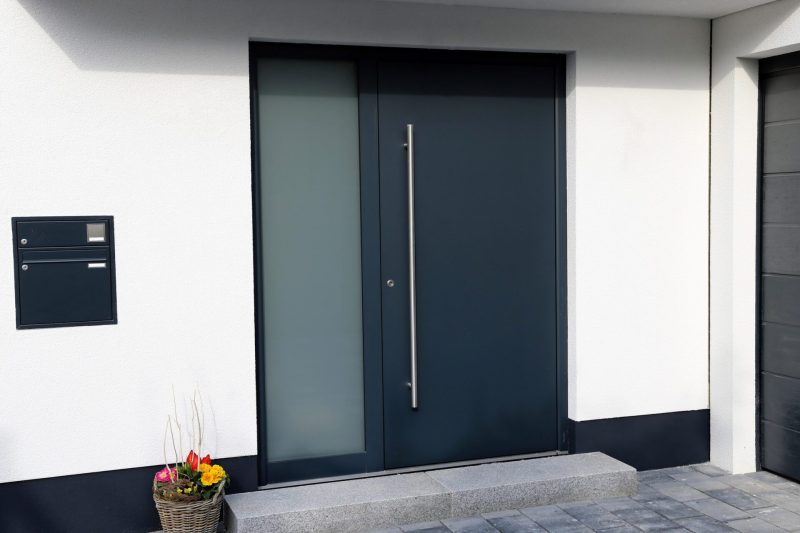Composite doors are highly popular with homeowners, and it’s not surprising when you consider the fact that they are lightweight, durable, and available in a range of styles and colours. No matter if you have had a composite door for several years now or are still thinking about if it’s the right option for you and your home, you might have wondered, can I paint a composite door?
Tastes can change over time and the colour and condition of composite doors, like any other doors, will deteriorate over time, so at some point, you may start thinking that you want to change things up with a new coat of paint. Can you paint it though? That’s what we’re going to look at in this article.

Is it ok to paint composite doors?
Yes, you can paint a composite door, but the real question is should you?
If you research this topic you will likely find that there are varying answers to this commonly asked question, but we think “can you paint composite doors or not?” is just one of the questions involved here. First, let’s consider what a composite door is and what it is made from before we get to repainting it.
Composite doors are made of a mix of materials, including uPVC, insulating foam, and glass-reinforced plastic. GRP is the last layer and material you would paint onto. It is also important to know that the colour of the composite door is incorporated into the plastic skin when it is being produced.
This is the chosen method because it prevents the colour from flaking, chipping, or cracking due to general wear and tear. Naturally, this is quite different to traditional timber doors that have a coat of paint over the top as a finishing touch. The first thing you will need to know is, is your composite door still within its warranty period? If you are not sure it is important to check because painting it will usually void the warranty if you have a valid one.
How can you restore colour to a composite door?
Before deciding to paint a composite door, you might want to think about a less intense option, especially if you are just wanting to return it to its original colour. Instead of repainting the full door and making a mess, you could invest in a touch-up pen to fill in any grooves or scratches on the door.
Maybe you’re looking at repairing your door because the colour has begun to fade. If that is the case, you might not need to do a lot more than give it a deep clean. Keep in mind what we mentioned earlier, the colour runs deep through the entire door glass-reinforced plastic and the door overall during the production process. One of the simplest ways to freshen up a door to the original colour and get it looking new again is by giving it a good clean with sugar soap.

Can you polish a composite door?
Due to the corrosive properties of sunlight, rain, and other weather conditions, you might be questioning if you can freshen up and protect your composite door with polish. Given that the outer layer is made of plastic, whether it is uPVC or GRP, you won’t be able to use traditional polishes. However, there are specialist multi-surface restorers that can provide it with a nice finish. Make sure you double check that your selected polish won’t damage the material of your composite door.
What paint should you use to paint a composite door?
There is a lot of debate around this topic. In fact, there is as much debate about this as there is about whether you should paint your composite door in the first place. Whilst some people will argue that oil-based paints work best, others will have the opinion that solvent paints are better. If you are uncertain as to which you should use, you could contact the composite door manufacturer or supplier for advice and potential recommendations.
How to paint a composite door
Painting a composite door is not really any different to painting any other surface. If you are committed to painting a composite door, either because you want to change the door colour, or it needs a refresh of its original colour and you don’t want to invest in a replacement door, then the rough guide below can help you get the best results.
Prepare
The most important part of your process for painting your composite door is the preparation beforehand. If you get that right and ensure you have everything you need to paint your door effectively, the process should go smoothly.
Clean
The first step is giving your composite door a thorough clean using sugar soap. This will help to ensure you remove any and all dirt, grime, oil, and any other residue that might make it more difficult for the paint to adhere to the surface. You should then rinse it off with clean water.
Sanding
Next, you will need to sand down the door completely as that will further help the paint settle and stick properly. After the door has been sanded, you will need to give it a detailed wipe down to get rid of the dust.
Painting
Whether you will require a primer, depends on the type of paint you intend to use. You should always follow the instructions to get the best results. Depending on the original colour of the door and the type of paint you want to use, you will likely need to give it at least one or two coats.
Finish
After you have finished adding all the necessary coats of paint, you are nearly finished. For the last step, you should use beeswax or a similar product to ensure your freshly painted door has a protective layer for the materials and a professional look. Whether you should or shouldn’t paint your composite door is really up to you and what you think is best for your door and home.

What are the alternatives to painting your composite door?
If you do not feel confident that you could paint your door to a professional standard, particularly if it’s your front door and has the most exposure, you might want to hire a specialist who has experience painting a composite door. However, if you want to get the perfect look for your door, we usually recommend a replacement composite front door or back door. That way, as well as changing the colour of your door, you can also update to a new style and design that will better suit your home.
Replacing your doors is certainly the quickest, easiest, and most effective way to give your home and door the refresh it really needs, in a colour that you love that will last for years.
 " alt="Can You Paint Composite Doors?
" alt="Can You Paint Composite Doors?